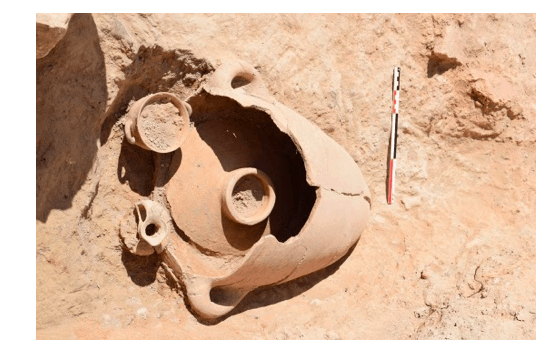The Cyprus Department of Antiquities announced that recent works on the sewerage system of Kition continue to bring to light archaeological discoveries that hold significant historical value to the ancient city, located in modern-day Larnaca.

Some of these are considered to be extremely significant, including a section of the defense wall of the ancient city of Kition situated on Teukros street.

Amongst the findings were many clay pots, metal tools, plus objects including bone tools and jewellery, artefacts and imported raw materials such as semiprecious stones and gold jewellery.
Another unique Roman mosaic was unearthed in 2016, measuring 19×4.60 m and depicting the Labours of Hercules, the Head of Antiquities Department, Dr Marina Ieronymidou-Solomidou said it is the first time that a mosaic has been located in Cyprus.
The finds of each excavation are now being thoroughly examined by experts in each category of material and also in groups of findings, such as the findings of a tomb, to come as close as possible to the historical conditions that created an archaeological assemblage.
Specifically regarding the gold jewellery in question, according to the ‟Phileleutheros” daily, experts say the gold jewellery are small artefacts, limited in number, found in tombs from Hellenistic (310-58 B.C.) and Roman times (58 B.C.-330 B.C.).
Their small number and the fact they have been found sporadically in burials and not in large assemblages make it evident that they were valued objects to their owners who were ordinary members of ancient Kition society.
Dozens of ancient carved tombs dating back from the Classical to the Roman period were also found on Griva Digeni Street (Drosia district) and on Agisilaou, Aeolou, Gordiou Desmou, Liperti and Kultur streets.
During excavation work on the sewerage system in Teukrou Street, several clay female figurines were also located which may have come from the so-called shrine of Kamilarkon, found and excavated in 1894 by British archaeologist J.L. Myres.
*Source: Archeology News Network
*Photo credit: Credit: Department of Antiquities of Cyprus


